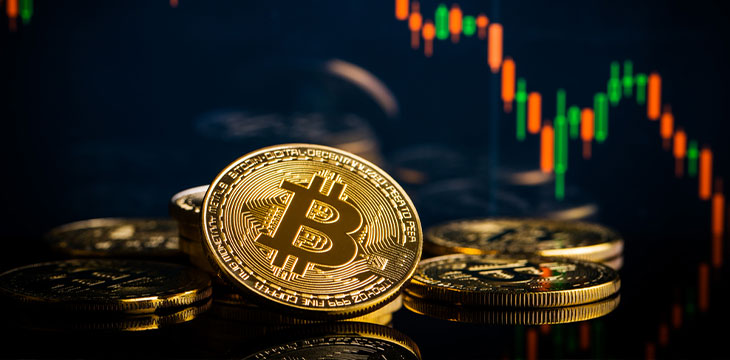|
Getting your Trinity Audio player ready...
|
This post originally appeared on ZeMing M. Gao’s website, and we republished with permission from the author. Read the full piece here.
Forbes report: Despite FTX Collapse Bitcoin Futures Surge.
This only highlights the problem in ‘crypto.’
In any economy, there are always producers and traders, and they can be healthily symbiotic. But a collapse becomes a certainty when traders are trading on values that are solely created by trading itself (i.e., speculative value arising from speculative trading activities alone), instead of value producers who are independent economic actors.
Those who only focus on quick profits either don’t understand this or don’t care about it.
The entire ‘crypto’ market has been almost entirely like this.
How do I know that? I could go into deep analyses on economics, law, technology, and market (and I did), but the whole argument can be based on a very simple observation: transaction volumes.
In a typical snapshot of the transaction volume of ‘crypto’ (I use the term broadly), the one blockchain that has sustained average volume at 50% of all transactions combined from all blockchains has a valuation of around 0.1% of the total market cap of the ‘crypto.’
See BitInfoCharts.
Just think about the two numbers and let them speak some sense: put this one blockchain on one side and the rest altogether on the other. The two sides would be comparable in terms of their respective total transaction volumes. But one side would count for only 0.1% of the market cap, and the other side for 99.9%.
If this still isn’t striking enough, let’s put it another way: with two sides of comparable transaction volumes, the second side has a total market cap that is 1000 times the first.
It is concrete evidence that the ‘crypto’ market valuation is based on anything but utility.
The reality is even worse than what the numbers show on the surface. It is verifiable that on this particular blockchain, the sustained transactions (excluding peak volumes which are for testing) are actual use activities rather than pure trading (because the particular coin is not even listed on most ‘crypto’ exchanges), while that on other blockchains are mostly trading transactions.
And the fact that the transaction volume on one side is growing at least 10 times faster than the other side doesn’t matter at all.
The point is not that the coin on that particular blockchain is undervalued but rather that the ‘crypto market’ valuation is not based on utility at all. It’s completely speculative.
I would further argue that everything ‘crypto’ is grossly overvalued, even after the recent crash. Most of them should go to zero. If judged by traditional stock valuation methods, even the above-mentioned suppressed coin on the blockchain that has dominating transaction volumes could also be overvalued now (but time will tell as the particular blockchain not only focuses on utility but is demonstrating the potential to become the base layer of the New Internet).
It’s simple math done with some common sense.
Many will argue, look, our champion coin is ‘decentralized’, therefore it has value.
No it doesn’t. I understand those arguments well. I could even make them much more convincingly than most others can. But decentralization is not value in itself.
Genuine (I mean genuine) decentralization may be necessary to create value in the space of blockchain, DLT, and the New Internet, but decentralization itself, even if it is real, is not value. You must have actual value to show value. It is so for economic values, and also for social values.
But in most cases, the so-called decentralization is not even real to start with. See more on this: Decentralization, a widely misunderstood concept.
Still others would argue, look, our champion coin has already created this ‘network effect,’ therefore has value.
No it doesn’t. Network effect is nice, but arguing that a ‘network of uselessness’ is in itself an intrinsic value is equivalent to arguing the size of a bubble is the justification of its own existence. Besides, what network effect? It is just a crowd, at best a good-sized cheering crowd with a few loud and bold cheerleaders. The team (coin or token) must perform to win, and this requires not only knowing what game it is in, but also having the skills to perform the required functions (economic and technological). See The size and the nature of the blockchain universe; and The network effect.
I wish I could scream to wake people up. But my voice can’t reach that many, even at the top of my lungs. Besides, screaming contradicts my personality.
Watch: The BSV Global Blockchain Convention panel, Tokenizing Assets & Securities on Blockchain

 01-05-2026
01-05-2026 




